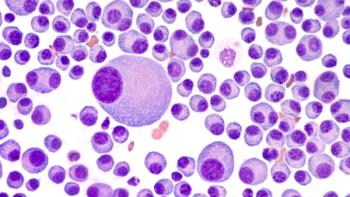
Cancer Surgery Increases Risk of Opioid Addiction
Patients receiving adjuvant chemotherapy are at a high risk of new persistent opioid use.
There has been growing awareness surrounding the dangers of opioid use due to the millions of Americans who are dependent on opioids and the thousands who have died as a result of an overdose.
While opioids are typically used to control post-operative pain, the question of whether the risks of addiction outweigh the pain management benefits of these drugs have been called into question; however, current treatment guidelines have not been addressed among patients with cancer.
A significant proportion of patients with cancer may continue to use
Specifically, the authors discovered that more than 10% of opioid-naïve patients took the drugs for 3 to 6 months after surgery, significantly longer than recommended.
Patients who are treated with adjuvant chemotherapy after surgery may be at an even higher risk of continuing opioid therapy, according to the study.
“We wanted to look at patients who had potentially curable disease, such as early stage breast cancer, colon cancer or melanoma,” said lead author Jay Lee, MD. “These patients deserve special attention, because if they’re going to be free from cancer, we’d also like them not to be on opioids long term.”
The authors said that patients may be more likely to misuse opioids due to emotions related to the diagnosis, pain from procedures, and a non-coordinated care team, according to the study.
“Cancer pain is challenging to treat, and opioids are a crucial part of the treatment plan for those patients,” Dr Lee said. “Because of this, patients with cancer have been relatively protected from recent efforts to reduce opioid prescribing. Unfortunately, we don’t understand the potential risks of opioids for patients with cancer.”
Included in the study were 39,877 opioid-naïve patients with cancer who were prescribed painkillers after curative-intent surgery.
Of these patients, 10% filled opioid prescriptions for 5 to 6 tablets per day for 3 months after surgery and daily doses remained high up to 1 year after surgery, according to the study.
“Five to 6 tablets a day would be typical for managing early postoperative pain,” Dr Lee said. “What’s not typical is still taking that 3 to 6 months after surgery. Most surgeons expect their patients would be off opioids completely within 2 weeks of surgery.”
The authors note that this level of opioid use was comparable to chronic users.
“To me, it’s really shocking,” Dr Lee said. “We’re trying to help these patients. We’ve performed this operation to cure them of their cancer. But we’ve left 1 in 10 as chronic opioid users. That’s a tremendous burden to leave with cancer survivors.”
Patients receiving adjuvant chemotherapy were at an even higher risk of persistent opioid use, with 15% to 21% of patients taking the drugs at high doses that exceeded long passed treatment guidelines, according to the study.
“Chemotherapy can cause painful complications,” Dr Lee said. “This kind of pain is challenging to treat, and opioids are often used to treat this even though they’re not very effective for managing this kind of pain.”
Now that it is understood that opioids come with an addiction risk, researchers are working on addressing appropriate therapy.
“First and foremost, we need to make sure we’re prescribing the appropriate amount,” Dr Lee said. “We’re conducting follow-up studies to evaluate how much patients are actually taking, and using that information to prescribe lower amounts. What we’ve found in our initial work is people take far less than we prescribe. Having a lot of extra pills puts these patients at risk.”
The authors also said that educating patients about opioids and appropriate use is important, according to the study.
“We should be telling them that this is for severe pain only. You should use Tylenol and Motrin first, and if the pain gets really bad, then you can take opioids as a last resort. We need to do a better job of counseling those patients on the risks associated with opioid use,” Dr Lee said. “The better we can educate patients, the less they’ll take while still having the same amount of pain control.”
However, physician responsibility is also a crucial factor in post-operative opioid use among patients with cancer, according to the study.
“I think that the entire multidisciplinary care team really needs to pay attention to this issue,” Dr Lee said. “We need to do a better job taking care of these patients. We need to make sure they have adequate pain management, but we also need to make sure that we’re not leaving them chronic opioid users.”
Newsletter
Stay informed on drug updates, treatment guidelines, and pharmacy practice trends—subscribe to Pharmacy Times for weekly clinical insights.




















































































































































































































